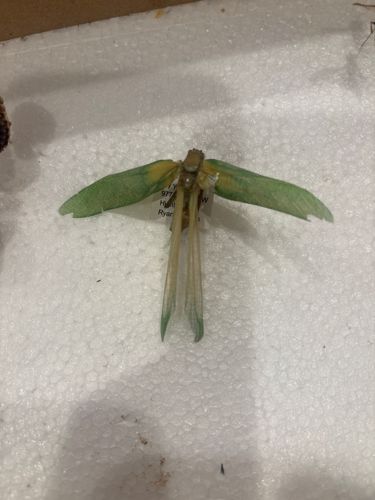Mayfly
Scientific Name: Ephemeroptera (Order)
Order & Family: Order: Ephemeroptera (various families)
Size: Body length usually ranges from 0.5 to 3 cm (0.2 to 1.2 inches), not including the tails (caudal filaments) which can be as long as the body.

Natural Habitat
Adults are typically found near fresh water sources like rivers, streams, lakes, and ponds where their aquatic nymphs develop. Nymphs live in various freshwater habitats depending on the species, from fast-flowing rivers to stagnant ponds.
Diet & Feeding
Adult mayflies do not feed; their mouthparts are vestigial or greatly reduced. As nymphs, depending on the species, they are primarily herbivores (grazing on algae and detritus) or detritivores (feeding on decaying organic matter). Some nymph species can be predatory.
Behavior Patterns
Mayflies have a unique lifecycle that includes an aquatic nymph stage, followed by two winged adult stages: the subimago (dun) and the imago (spinner). The subimago emerges from the water, flies to a sheltered spot, and molts into the sexually mature imago. Adults have a very short lifespan, typically lasting from a few hours to a few days, during which their sole purpose is reproduction. They often emerge in large swarms, particularly at dusk, performing aerial mating dances. Females lay their eggs directly into the water.
Risks & Benefits
Mayflies are not harmful to humans; they do not bite or sting. They are highly beneficial as bioindicators of water quality; their presence often signifies clean, unpolluted water. They are a crucial food source for many aquatic and terrestrial predators, including fish (especially trout), birds, and bats. Large swarms can sometimes be a nuisance or create slippery conditions on roads near water bodies.
Identified on: 9/19/2025